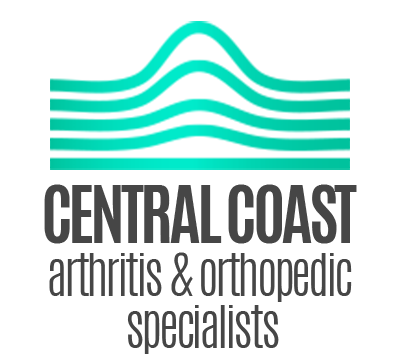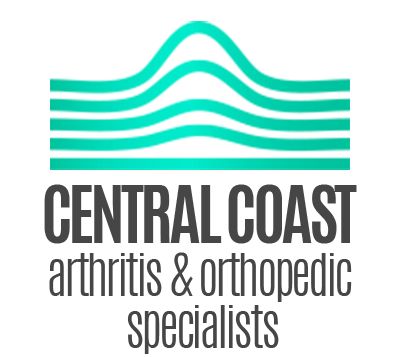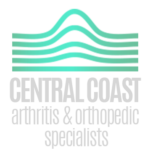The best in total and partial joint replacement
Enjoy all of the benefits of joint replacement with less pain and a faster recovery.
Total and partial joint replacement surgery is generally thought to be a difficult, painful procedure that is followed by a long and arduous recovery.
Total Joint procedure patients receive all of the benefits of total or partial joint replacement with less pain and a shorter recovery period. The procedure spares as much of the natural joint as possible, allowing patients to walk immediately following the procedure, with surprisingly minimal pain! With most patients completing all of their rehab from home, it is easy to see why so many people are reimagining joint replacement and their active futures with Central Coast Orthopedic and Arthritis Specialists!

Carlo Orlando, MD.
ORTHOPEDIC SURGEON
Always there to care
Book Your Appointment
Joint Repl - Book
We will get back to you as soon as possible.
Please try again later.
Arthritis is painful, but Dr. Orlando gets you back to the life you love
Osteoarthritis
A condition without a cure, osteoarthritis effects over 27 million Americans. As joints wear down over time, cartilage deteriorates and bone overgrowths occur, causing intense pain and discomfort. We love seeing our osteoarthritis patients come out on the other side of surgery with a pain-free future.
Rheumatoid arthritis
An autoimmune disease that causes the body to attack the lining of the joints, wears down cartilage, and causes severe inflammation, Rheumatoid Arthritis effects 1.5 million Americans. While there is no current cure, patients can find relief with our state-of-the-art joint replacement procedure.
Post-traumatic arthritis
When an injury occurs to the knee or hip that impacts the mechanics of a joint, the joint deteriorates, leading to post-traumatic arthritis. A painful condition, most patients lose significant range of motion and experience pain during daily activities. CCAOS can put a stop to this pain with our minimally invasive bone resurfacing technique.
The most
innovative
and
minimally invasive
approach to
joint replacement
Total Joint techniques performed by Dr. Orlando relies on innovative technology to increase patient satisfaction and decrease recovery time. The procedure utilizes resurfacing techniques to preserve the natural joint, advanced imaging to place the new joint with precision, and ultrasound-guided nerve blocks to minimize pain during and after the procedure. All of this allows patients to walk immediately after treatment and to complete rehabilitation frequently without the assistance of a physical therapist.
Bone resurfacing preserves the bone
Rather than replacing the entire joint, which would result in limited and unnatural movement after surgery, Dr. Orlando uses a bone resurfacing technique. This means he only replaces the damaged part of your bone and fits an implant, contoured to your bone, on the affected area. This leaves patients with more of their natural joint and less recovery time!
Advanced imaging for maximum precision
Using advanced imaging, Dr. Orlando determines your joint size and orientation before surgery. With such precise imaging, patients can count on the joint moving naturally and smoothly for years to come.
Effective pain management
Through ultrasound-guided nerve blocks, Dr. Orlando reduces the amount of pain patients experience during and after their procedures. By deploying this technique, he completes most total and partial joint replacements without general anesthesia and patients recover with little to no use of pain killers.
Quick recovery from home
One of the least popular parts of joint replacement surgery is the long recovery process and countless visits to the physical therapists. The minimally invasive Hilo Total Joint procedure allows patients to recover in less time and from the comfort of their own home.
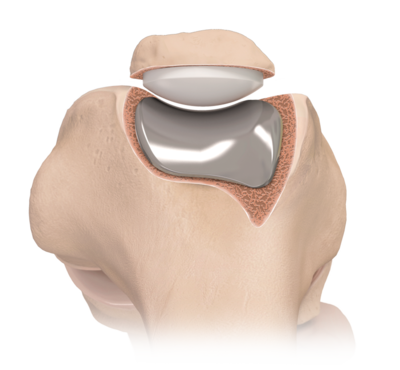
Frequently asked questions
Appointment and Diagnosis
-
Is there anything I need to bring for the initial consultation?
We usually recommend bringing any recent imaging that you have ( x-ray, MRI, CT scans). It is always helpful to have the actual images on a CD and the written report.
In addition, if you have had surgery recently, copies of the operative report and/or any images taking during the surgery are always helpful.
-
How would I know if I need a total joint replacement?
You will have been told that you need a joint replacement by an orthopedic surgeon. Generally, you will have failed other forms of treatment including restricted activities, bracing, oral medications, physical therapy, and injections in the joint. If your joint pain is severe and has limited your ability to perform everyday activities, be sure to get evaluated by an orthopedic surgeon.
-
Is there an age limit for total joint replacement surgery?
There is no age limit for joint replacement surgery. If you are suffering and are in severe pain, you are usually a candidate regardless of your age.
-
What tests are required before undergoing joint replacement surgery?
You will need routine blood tests, X-rays of the joint involved, and, if you are 60 years or older, an EKG and a chest X-ray. If you have other medical issues, you may need medical clearance by your primary care doctor and or other specialist involved in your care.
-
Should I start or stop any medications before the surgery?
Your surgeon will review your medications with you prior to surgery. If you are on a blood thinner, your surgeon may require you to cease taking the medication 5-7 days prior to surgery. Note that it is very important to discuss this with your primary care doctor- never stop taking blood thinners unless it is cleared by your doctor. CCAOS will communicate with your primary care doctor and/or other specialists prior to surgery to determine how to manage your medications prior to surgery.
-
Is total joint replacement surgery safe?
There are risks with all surgeries. Joint replacement surgery carries a slightly higher risk than some other treatments because it is a more invasive procedure. The overall risk, however, is very low. Your surgeon will discuss surgical risk and various risk factors in detail with you.
-
What are the major risks of total joint replacement surgery?
Your orthopedic surgeon will review risk factors in detail with you. Risk factors for joint replacement surgery include infection, bleeding, nerve damage, anesthetic risks, possible blood clots, and the possible need for revision surgery in the future. A small percentage of patients continue to have pain or stiffness despite having a successful knee replacement.
Treatment/Procedure
-
How will I prepare for my surgery?
Several days to a week prior to surgery you will undergo pre-op labs and possibly an EKG and/or a chest X-ray depending on your age and any other medical issues you may have. Your surgeon may request medical clearance by your primary care physician and/or other specialists involved in your care.
You may need to visit your primary care provider or specialist several weeks prior to surgery. They may require other preoperative workups or tests. The CCAOS surgical scheduling team will help to coordinate whatever preoperative needs you have prior to your surgery. These preoperative labs and tests are necessary to make your anesthesia and surgery as safe as possible.
Your surgeon may ask to see you a few days before the procedure to review everything and answer any further questions you may have. Usually at that visit you will sign a surgical consent after your surgeon describes all the risks and benefits of the procedure and answers all of your questions.
** Please do not hesitate to call CCAOS if you have any questions. Though this can be a very stressful process for the patient, joint replacement surgery is a routine process for us. We understand that patients will have questions and we are standing by ready to provide any information requested.**
-
How long will the surgery take and how long will I be in the hospital?
With traditional joint replacement, the patient generally receives physical therapy and visits by a home nurse for the first several days to change dressings, etc. at home. The first follow-up office visit is usually 7-10 days after surgery. By then the patient is generally ambulating with a cane or a walker.
The HILO Total Joint technique, however, allows patients to walk immediately after the procedure and to be back in action in weeks, not months. You can contact CCAOS to know if you are qualified for the HILO procedure.
-
What happens during surgery?
When you arrive on the day of surgery, you will meet the anesthesiologist to discuss anesthetic options for the procedure. You will also see your surgeon, who will answer any further questions you have and review the procedure with you.
You will then be brought into the operating room, where the anesthesiologist will sedate you and the surgeon will perform the joint replacement procedure. At the end of the procedure the anesthesiologist may perform a local nerve block to the extremity so when you wake up you are comfortable. You may also receive pain medication in the recovery area, if necessary.
-
Will the surgery be painful?
Surgery can be very painful with traditional joint replacement. The nerve blocks received during the surgery usually make patients comfortable for the first 12-24 hours. The pain will improve over the first few days, though patients more than likely need to take oral pain medications for the first week or so following the procedure.
With the HILO Total Joint technique, advanced imaging is utilized to place the new joint with precision, and through ultrasound-guided nerve blocks, the amount of pain patients experience during and after their procedures is minimized. With this technique, Dr. Orlando completes most total and partial joint replacements without general anesthesia and patients recover with little to no use of pain medications.
Recovery
-
Will I be in much pain after surgery?
You will need an ambulatory device such as a walker, crutches, or cane for at least several days and possibly for several weeks following the traditional joint replacement procedure. You will be able to put weight on the surgically repaired joint, but immediately following the procedure it will be difficult and uncomfortable. An ice machine is also readily available for pain management after surgery, just give CCAOS a call for details.
With the HILO technique, however, patients experience less pain following their procedure and throughout their recovery. This procedure allows patients to walk just 60 minutes following surgery and allows them to get back to the lives they love with greater ease and less recovery time!
-
Will I need a walker, crutches, or cane?
After undergoing traditional joint replacement, you will need an ambulatory device such as a walker, crutches, or cane for at least several days and possibly for several weeks following the procedure. You will be able to put weight on the surgically repaired joint, though immediately following the procedure it will be difficult and uncomfortable. With the HILO Total Joint procedure, on the other hand, patients experience less pain after the procedure and throughout their recovery.
-
Will I need physical therapy after the surgery?
You will need physical therapy initially. A traditional total knee replacement usually requires one to two months of physical therapy as an outpatient. A traditional partial knee replacement sometimes needs about a month of physical therapy. Every patient responds differently and has different physical therapy requirements.
The minimally invasive HILO Total Joint procedure, however, allows patients to recover in less time and from the comfort of their own home with mininal rehab. Call CCAOS to know if you qualify for the HILO procedure.
-
Will I need pain medication after the surgery?
After undergoing traditional joint replacement, your surgeon will provide pain medication to help keep you comfortable. Initially, you will need a narcotic such as Norco or Percocet, though you will eventually be able to transition to ibuprofen, naproxen, or Tylenol to manage your pain. In addition, icing the extremity will help significantly with the swelling and pain. It is recommended to ice the extremity for 20-30 minutes several times a day for the first several days after surgery. An ice machine is also readily available at CCAOS to help patients manage pain during the recovery period. Please do not hesitate to call for details.
In contrast, the HILO technique has patients recovering with little to no use of pain medications. Give us a call to know if you qualify for the HILO procedure!
-
Do I need someone to stay with me at home after I am discharged?
You should have somebody available to stay with you at home for the first day or 2. You will be ambulatory but having someone helping with every day activities is necessary.
-
How long will a replacement joint last and is it possible to do a second replacement?
Your joint replacement should last for many years and possibly the rest of your life. There is no guarantee as to how long it will last. Occasionally, the implants may loosen or wear out and need to be replaced. Second joint replacement surgeries are possible and are recommended for patients whose original joint replacement has worn out.
-
Will the replacement joint set off security sensors at the airport?
Your joint replacement will set off the sensors in the airport. The TSA may scan your leg and possibly ask to see the incision.
-
How soon can I go up and down the stairs, drive, and return to work?
You will be able to go up and down stairs immediately, but it will not be comfortable for several weeks. If it is your right extremity you will not be able to drive for up to two months.
You will need to discuss when you can return to work with your surgeon. Depending on the type of work you do, you may be able to return to work in several weeks at very light duties. It may be several months before you can return to normal duties. Every patient recovers differently and at a different pace.
-
When can I resume sports activities?
You may return to sports when cleared by your surgeon. Your surgeon may prohibit you from participating in certain high-impact activities. Please ask your surgeon these questions prior to the surgery so you can have appropriate expectations.
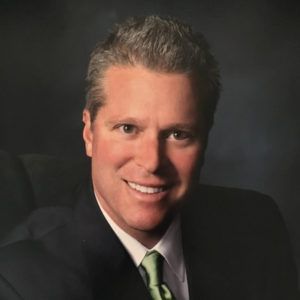
About Dr. Orlando
Carlo Orlando, MD. relocated to the Central Coast in 2018 following 23 years of orthopedic sports practice in Glendale, California. Dr. Orlando brings a wealth of experience to Central Coast Arthritis and Orthopedic Specialists, specializing in arthroscopic hip, knee, and shoulder surgeries and joint reconstruction.
Prior to moving to Templeton, Dr. Orlando was a 20-year volunteer attending orthopedic surgeon at the University of Southern California. He also spent four years as the fellowship director for the AOS orthopedic and sports fellowship program. Additionally, he served as as a preceptor for the USC physician assistant program for the last 10 years.
Resources
Office Hours
- Mon - Thu
- -
- Friday
- -
- Sat - Sun
- Closed
CLOSED FOR LUNCH 12:00-1:30 MON-THURS
Copyright 2024 Central Coast Arthritis and Orthopedic Specialists | Privacy Policy
